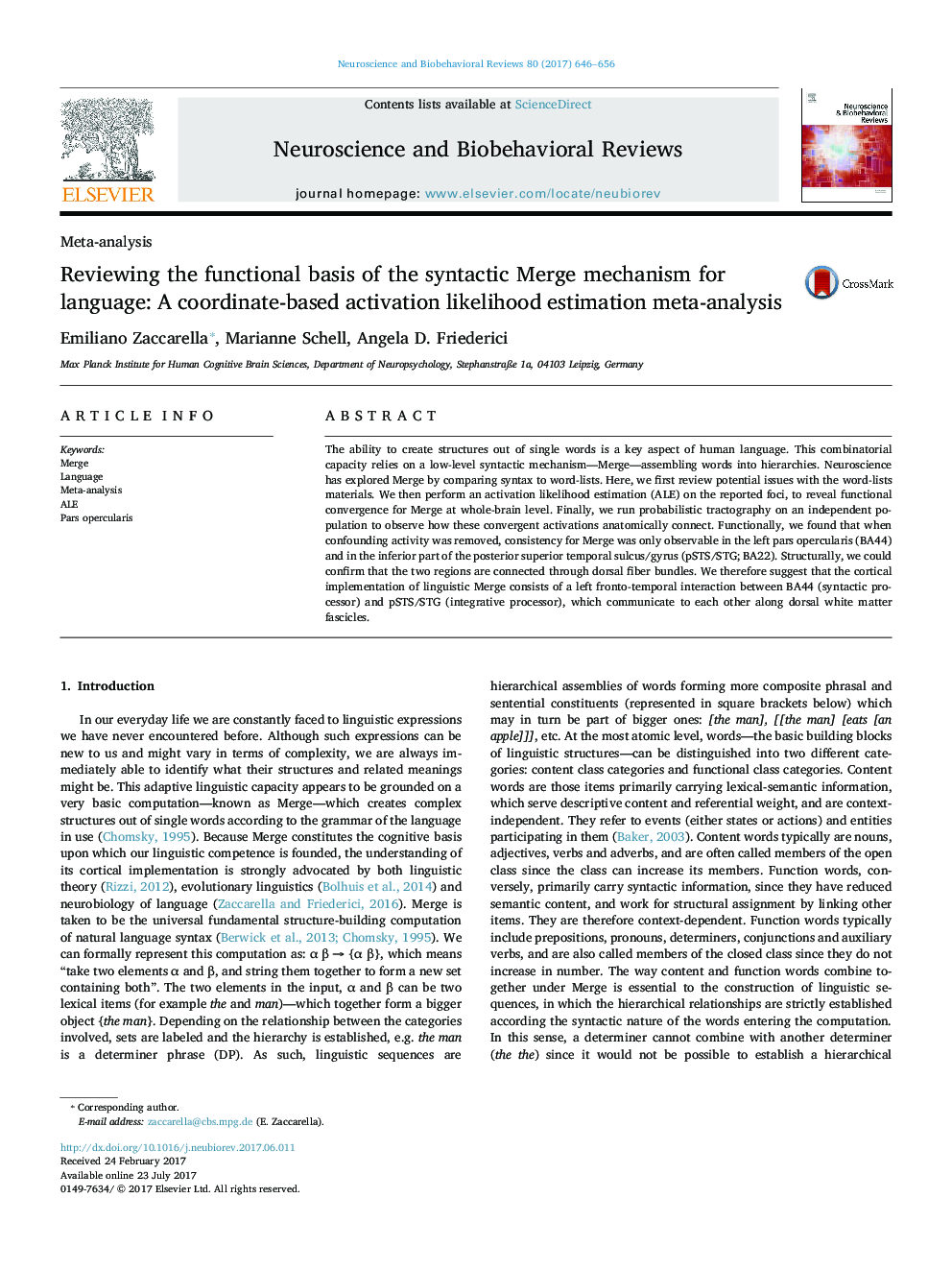| Article ID | Journal | Published Year | Pages | File Type |
|---|---|---|---|---|
| 5043471 | Neuroscience & Biobehavioral Reviews | 2017 | 11 Pages |
â¢Merge is the low-level syntactic mechanism assembling words into hierarchies.â¢Merge processing shows consistent engagement of BA44 and pSTS/STG.â¢Syntactic chunking in the control conditions causes decrease of activity in BA44.â¢BA44 is pure syntactic processor, pSTS/STG integrates syntactic/semantic information.â¢Dorsal fiber bundles regulate the Merge mechanism between frontal and temporal lobes.
The ability to create structures out of single words is a key aspect of human language. This combinatorial capacity relies on a low-level syntactic mechanism-Merge-assembling words into hierarchies. Neuroscience has explored Merge by comparing syntax to word-lists. Here, we first review potential issues with the word-lists materials. We then perform an activation likelihood estimation (ALE) on the reported foci, to reveal functional convergence for Merge at whole-brain level. Finally, we run probabilistic tractography on an independent population to observe how these convergent activations anatomically connect. Functionally, we found that when confounding activity was removed, consistency for Merge was only observable in the left pars opercularis (BA44) and in the inferior part of the posterior superior temporal sulcus/gyrus (pSTS/STG; BA22). Structurally, we could confirm that the two regions are connected through dorsal fiber bundles. We therefore suggest that the cortical implementation of linguistic Merge consists of a left fronto-temporal interaction between BA44 (syntactic processor) and pSTS/STG (integrative processor), which communicate to each other along dorsal white matter fascicles.
